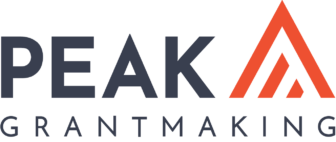Now more than ever, grants management systems play critical roles in foundations’ technology ecosystems. While they were once primarily used by grants managers, they have since evolved in functionality and customizability to include applicant and grantee portals, program management functions, dashboards and reports configured to meet the needs of leadership teams, and even some board portal functionality.
That evolution doesn’t happen in a vacuum—rather, it is the result of multiple intrinsic and extrinsic factors, a combination of individual foundation and grantee needs with the broader sector trends that become the headlines of so many articles, discussions, and conferences. This growth is certainly welcome in a sector that is often characterized as being stalled and stagnant, but it also brings new tensions, or growing pains.
If you’ve opened this guide and are in the market for a new GMS, chances are good that you are already intimately familiar with the challenges of managing your grantmaking operations. If you’ve been in the field for more than five years or so, you have also likely seen massive changes to your role, scope, and focus area. The role of grants management professionals has broadened and, in some ways, become less defined, which has in turn increased the rigor of requirements we place onto our technology.
Simply tracking financials and reporting is no longer enough for many grantmaking organizations. Ever-growing interest in trust-based and grantee-centric practices and reducing administrative burden continues to shift the landscape of grants management systems and tech, pushing the companies building those systems to incorporate more user-friendly processes, automated workflows, and third-party integrations to facilitate the exchange of information and data. While it is impressive to see the technological advancements in our sector, the wide range of solutions available to grantmaking and philanthropic organizations can be overwhelming.
This explosive growth dovetails with the rise of artificial intelligence (AI) and our appetite to integrate its powers and processes into pre-existing workflows. Of course, this trend isn’t limited to philanthropy; use cases for both predictive and generative AI are popping up in sectors worldwide, with varying degrees of success.
One of the difficulties in achieving impact with AI is the lack of sector-wide infrastructure to supply and support it with good data. Many communities of practice are working more closely together to collaborate on common challenges to the benefit of the grantees they serve. But it is also important to keep in mind that we all have a role to play in making the systems that support philanthropy more effective and more equitable. In practice, that means continuously working to implement equitable and effective practices while advocating for systems and tools that support these efforts. PEAK Grantmaking has a collection of resources to help you address the complex challenges of working with data, recalibrate your grantmaking processes, and help you transform raw data into practical insights and share knowledge across the sector.
Foundations have power to effect change as funders, as facilitators, and as customers. Keep in mind that the technology you choose is a means to an end—it is not the end. Treat your tech as a way to be transformative, not as the transformation itself. While your system acts as a tool enabling you to participate in better practices, your role is to ensure those practices are tied to your organization’s values. The people working in this sector are the heart and soul of all we achieve, and they carry the responsibility of embedding that drive and care into the tech that supports the work.



